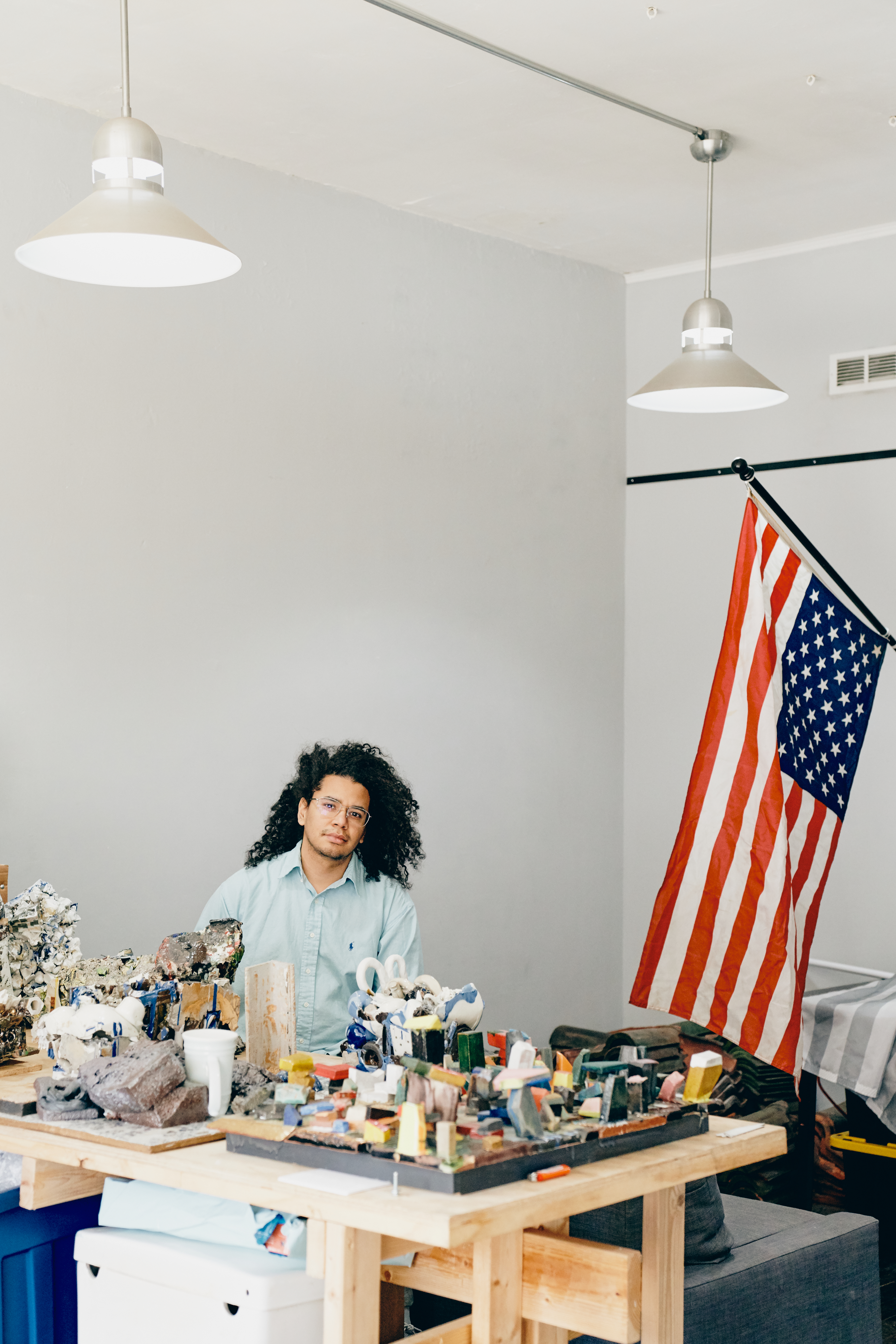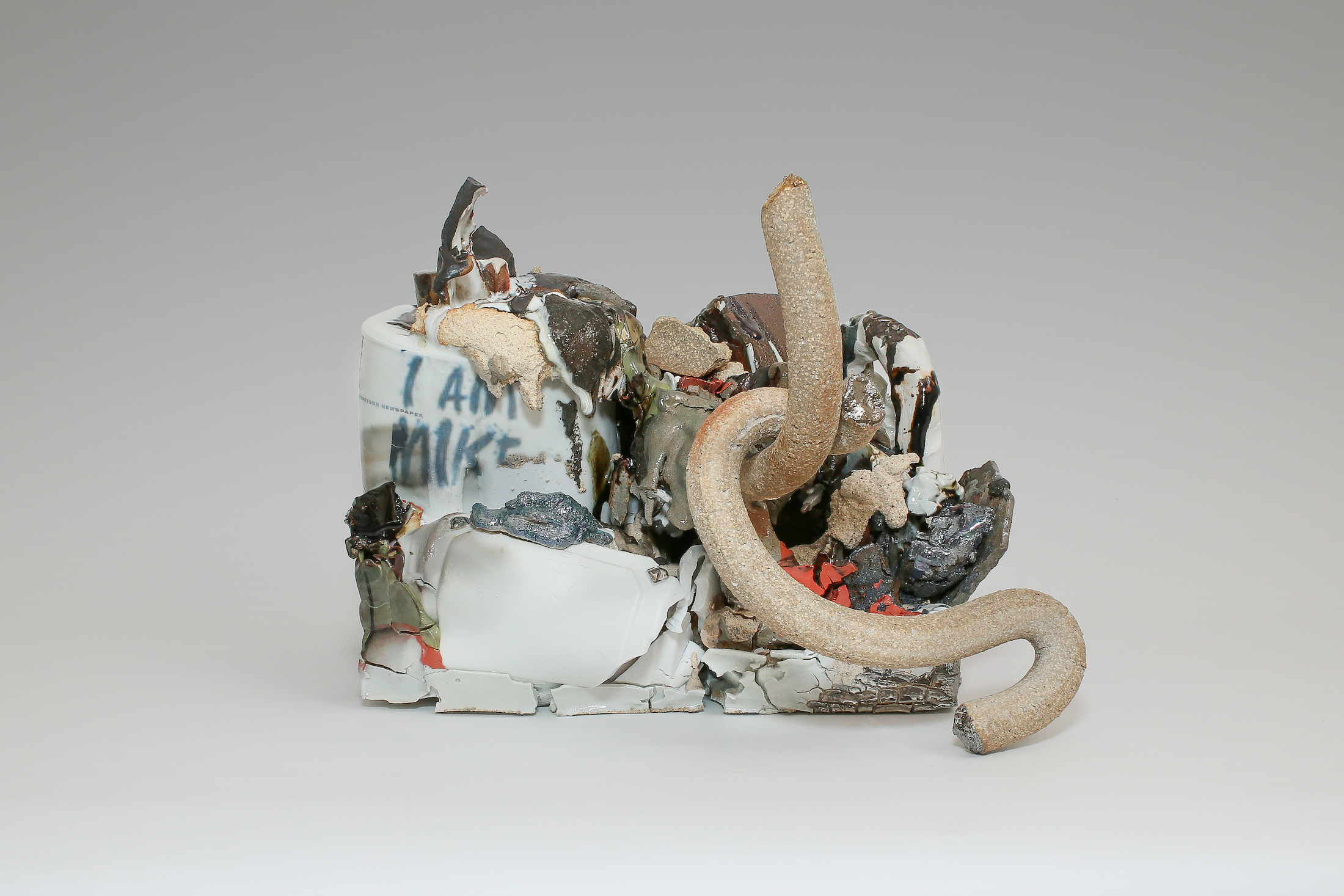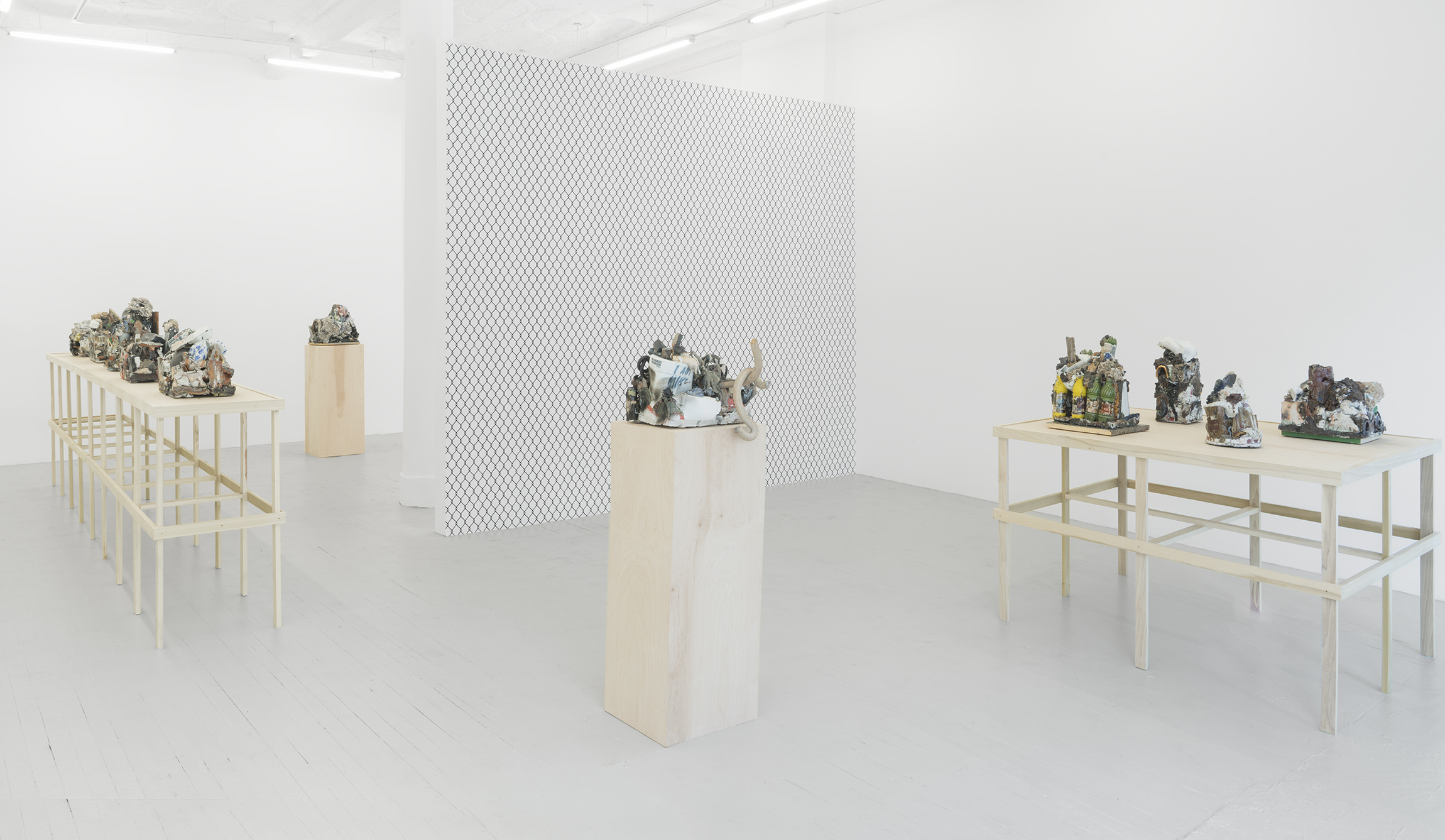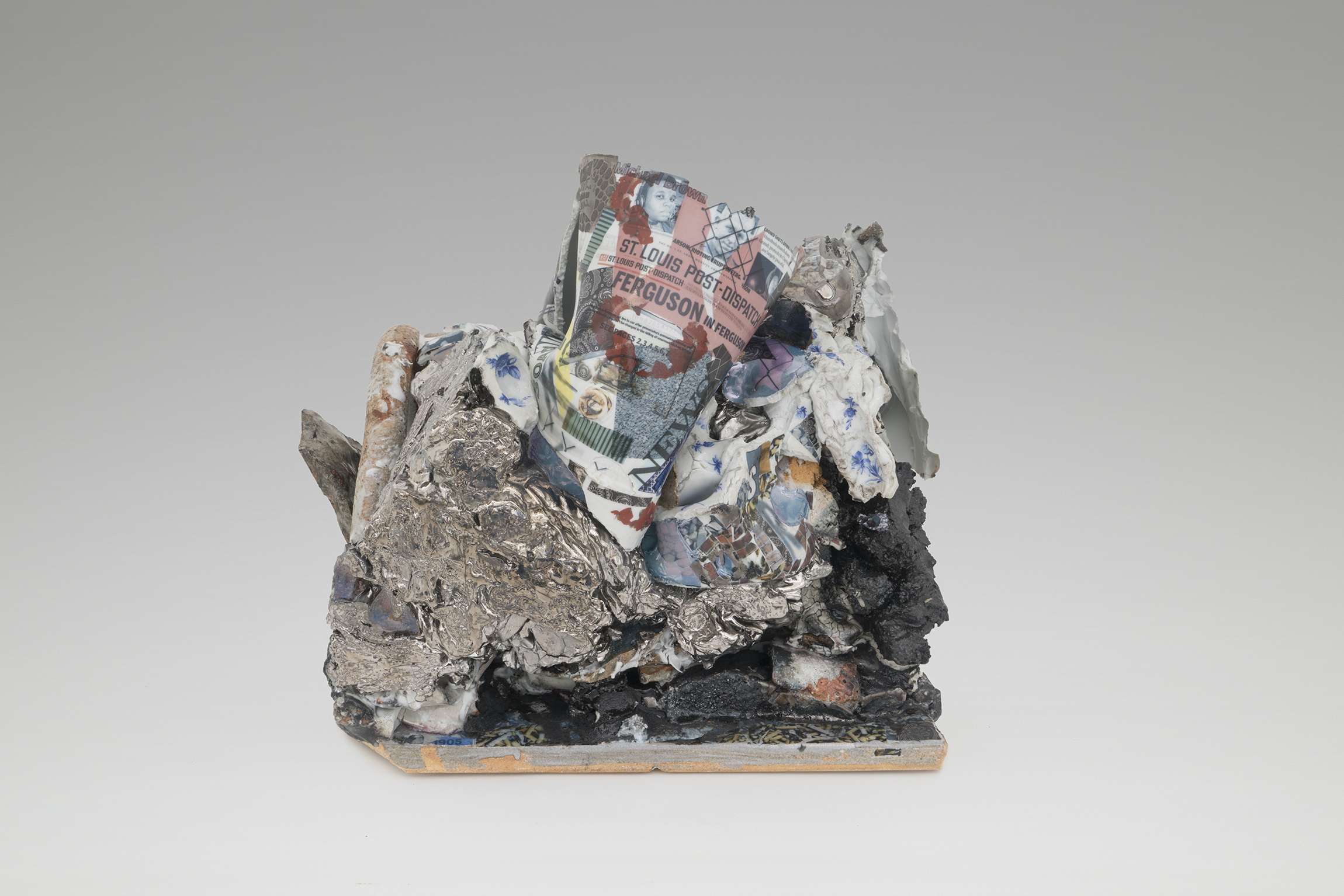
Despite his inclusion in the Whitney’s "Making Knowing: Craft in Art 1950–2019," Kahlil Robert Irving is not beholden to the archetypal ideas of craft-making. 27-year-old Irving has recently garnered critical acclaim for his pioneering work with ceramic assemblage. His sculptures carefully recreate the everyday detritus of littered sidewalks with resplendent shards of porcelain, punctuated by decals from his social media engagement. Irving's ceramics practice exposes the underlying material and cultural histories of the medium. “It’s not just the material, but what the material is doing,” declares Irving, a sagacious conceptual thinker and an erudite materialist.
I spent the afternoon with Irving in his inconspicuous studio—the tattered sign out front still bears the name of a former hardware store—in St. Louis's Dutchtown neighborhood, a city that has experienced the collapse of urban industry coinciding with significant media attention surrounding police violence against Black folks. In the studio, numerous stoic, black vessels stand on shelves that line his walls—these objects become metonyms for people in installations such as I Love who you are, I love who you ain't (2016). On the ground lie tile works that echo asphalt, which recently received high praise in "Black Ice," his sophomore show at Callicoon Fine Arts in New York. In his practice, Irving draws attention to news stories and his everyday engagement with them in decals. Some read "I AM MIKE," commemorating the death of Michael Brown, while others announce "NO CHARGES FOR WILSON," deriding the outcome for the officer who killed him.

Irving grew up in Missouri, and it is more productive to consider his work in terms of the subsidence of American industry than through the legacy of American pottery. Irving casts and shapes familiar trash, including Vess soda bottles (a soft drink produced in St. Louis), Sprite cans, lottery tickets and newspaper scraps. He describes his work as “content-driven to expand material possibility.” While these elements are easily mistaken as found objects, they're actual rendered through masterful trompe l'oeil efforts. The objects and installations he produces are hyper-present engagements that grapple with the realities of being a Black citizen of the United States today.
“I am interested in the history of decorative arts in relationship to its colonialist and oppressive domination over the world's cultures,” he noted. “I’m thinking about historical ceramic objects and also how those traded or industrially produced objects around the world, Asia and Europe, have found their way through the lineage of colonialism.”

“Craft” has long been a term thrown around to denigrate the skillsets and prescind the contributions of those deemed to be outside of the Western art history canon. Irving interrogates the implications of language around making, noting the difference between hobbyist craft and expert fabrication. In some pieces, Irving will fire his ceramics 12 to 16 times in order to achieve his vibrant colors and metallic finishes. In other, quieter pieces, like the "White matter, white text [State of Missouri, {Jason Stockley}]" series (2019), Irving imprints the acquittal document of Jason Stockley onto American Olean tiles. These white, consumer-grade products—once fabricated in a New York State Factory—are no longer made in the United States, and Irving uses this territory as a metaphor for empty American promises of justice and job security.
His signature on many of these works comes in the form of his Apple ID. A gesture that speaks to our constant, hyper-capitalized, digital world. His work will occasionally feature online articles, memes and Facebook statuses rendered in three dimensions. Throughout our conversation, Irving surfed the internet, constantly trying to find PDFs, memes and web articles for upcoming work. I asked Irving about his Screen Time. “4 hours,” he replied, which he spends between music, Instagram, articles and livestreams of government affairs. Having seen his archive of digital imagery, I’m surprised it isn’t higher.

As he continues to consider our material engagement with the internet and digital communication, his new work appears to be moving beyond ceramics. Irving is gearing up for major shows in 2020, from his participation in the Great Rivers Biennial in St. Louis to solo exhibitions at Jenkins Johnson Gallery in San Francisco and Galleria Poggiali in Milan. A new commission for the Cincinnati Contemporary Art Center, "Ground water from screen Falls [( ," will envelop 30 feet of the museum’s lobby wall with an custom wallpaper and a carpet installation that traces his digital inhabitance. And as he makes a name for himself outside of ceramics, themes emerge that transcend his materials and define his practice—a layering of information transforms disparate fragments into potent, complex considerations of identity, as what appears low-brow proves to be astute.



